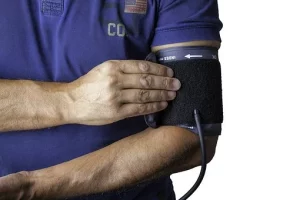How to use blood pressure tablets: 10 do’s and don’ts

In this article we will describe how to use blood pressure tablets: with 10 do’s and don’ts.
10 Do’s
For patients
-
Take your medication as prescribed: Follow the dosage instructions provided by your doctor or pharmacist. Take the correct dose at the same time each day
-
Monitor your blood pressure regularly: Regular monitoring will help you understand how your medication is working, and if any adjustments are needed
-
Exercise regularly and maintain a healthy diet: Regular physical activity, and a balanced healthy diet may help lower your blood pressure and improve overall health
-
Use adherence aids: E.g. dosette boxes, filled by your local pharmacist
For doctors
-
Prescribe in line with NICE and BHS guidelines: Ensure your prescribing practice aligns with the latest guidelines from the National Institute for Health and Care Excellence (NICE) and the British Hypertension Society (BHS)
-
Monitor renal function and electrolytes: Regularly check patients’ U+Es (for renal function and electrolyte levels), especially when initiating or adjusting antihypertensive medication
-
Start with low doses and titrate: Begin with low doses and gradually increase as needed to minimise side effects and optimise blood pressure control. Aim for:
- 130/80 – most people
-
120/70 – if has diabetes
- 110/70 – if pregnant
- 140/90 – frail elderly.
-
Use combination therapy when necessary: Consider combination therapy with multiple antihypertensive agents when patients require more than one medication to achieve blood pressure targets. If control is poor on 3 drugs, refer to your local hospital specialist (may be renal, cardiac or endocrine)
-
Check patient adherence: E.g. bradycardia if taking betablockers; urinary sodium (diuretics); urine antihypertensive drug metabolites.
10 Don’ts
For patients
-
Don’t skip doses: Take your medication as prescribed, even if you feel fine. Skipping doses can lead to uncontrolled blood pressure
-
Don’t adjust your dosage without consulting your doctor: Only your doctor can adjust your medication dosage
-
Don’t take someone else’s medication: Blood pressure medication is prescribed specifically for you, so don’t take someone else’s medication
-
Don’t consume excessive salt
-
Don’t stop taking your medication without consulting your doctor: Stopping your medication abruptly can lead to uncontrolled blood pressure.
For doctors
- Don’t forget to consider medication costs and availability: Be mindful of the cost and availability of antihypertensive medications, especially for patients with limited financial resources or those living in areas with restricted access to healthcare.
- Don’t overlook non-adherence: Be aware of the potential for non-adherence to medication and address any concerns or issues patients may have
- Don’t neglect to monitor BP control: Don’t just start tablets and assume all will be OK
- Don’t fail to address patient concerns: Listen to patients’ concerns and address any questions or worries they may have about their medication or treatment plan
- Don’t disregard the importance of lifestyle modifications: Emphasise the importance of lifestyle modifications in supporting blood pressure management and overall health.
Summary
We have described how to use blood pressure tablets: with 10 do’s and don’ts. We hope it has been helpful.

